Introduction to CBRN Training Systems
Adopting and utilising CBRN training systems for chemical warfare has traditionally been a challenge due to the nature of the materials being used. However, new opportunities for training with advanced technology is allowing students and instructors to safely and flexibly get hands-on experience with chemical warfare agents.
Keep reading to learn more about chemical warfare agents (CWAs), key treaties and regulations, and how training has evolved over the decades.
What are CWAs?
The Organization for the Prohibition of Chemical Weapons (OPCW) defines a chemical warfare agent (CWA) as “any toxic chemical that can cause death, injury, temporary incapacitation or sensory irritation through its chemical action.”
The Chemical Weapons Convention (CWC) provides a broader definition to include toxic chemicals, their precursors, munitions and devices, and “any equipment that has been specifically designed for use in connection with such weapons.”
The Convention also applies to any chemical that might normally be used for peaceful or commercial purposes but that has been used as, or applied to, the creation of chemical weapons.
Chemicals may also be classed as CWAs if they are produced or stockpiled in quantities that exceed the prohibitions of the CWC.
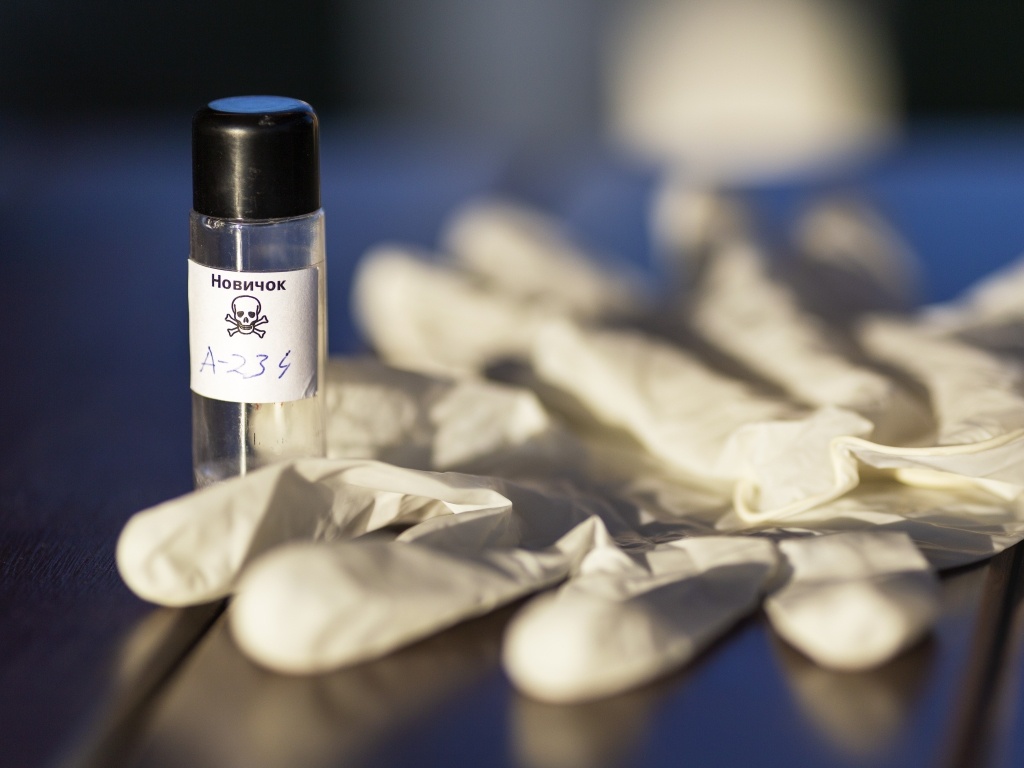
Chemical Warfare Agent Treaties and Regulations
Recognition of the global threat of CWAs dates back many hundreds of years.
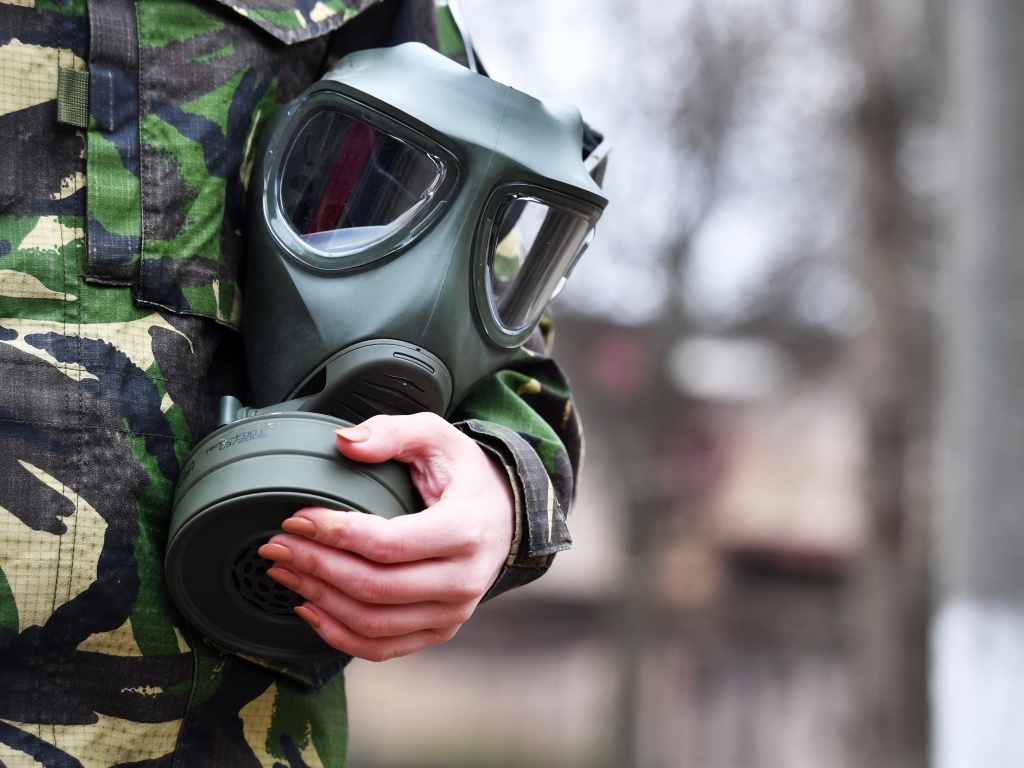
1675
The first formal international agreement to control the use of chemical weapons was signed in Strasbourg when France and Germany agreed to ban the use of poisoned bullets.
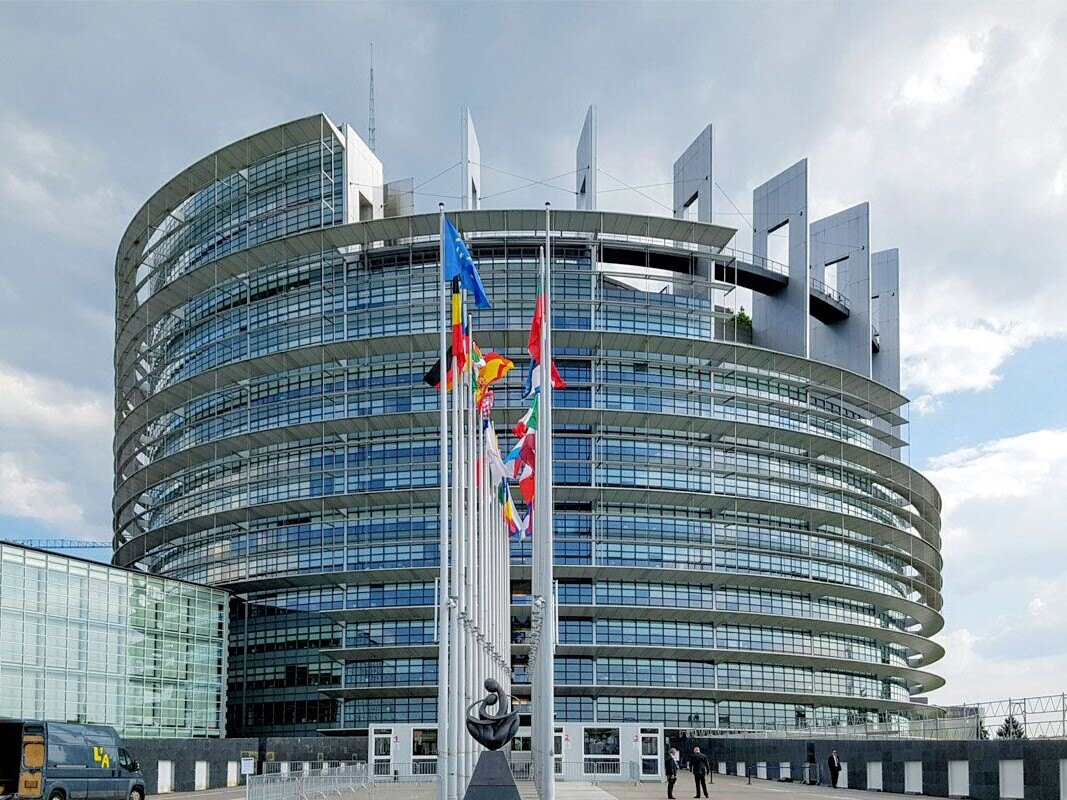
1899
A third agreement, ratified at an international peace conference held in the Hague, banned the use of projectiles filled with poison gas.

1993
Chemical Weapons Convention aims to eliminate an entire category of weapons of mass destruction (WMDs) by banning the development, production and stockpiling of CWAs.
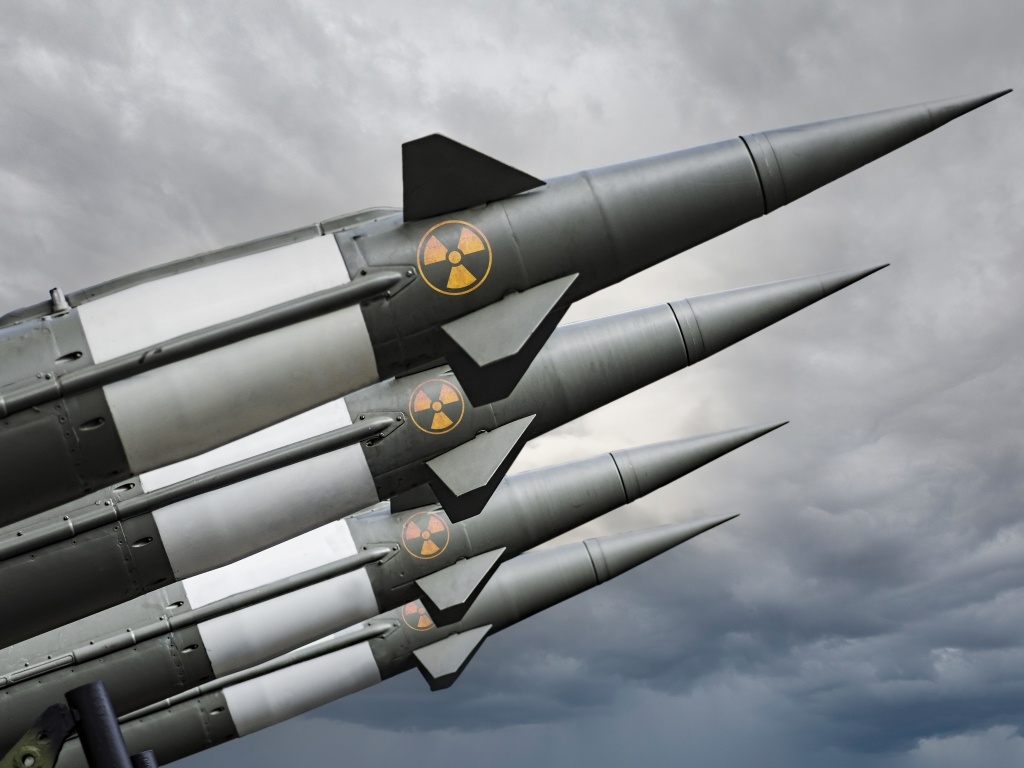
Convention Rules
The Convention rules that toxic chemicals are only to be developed and produced for purposes unrelated to chemical weapons. All States Parties agree to chemically disarm by destroying any stockpiles of chemical weapons and the facilities that produce them.
A unique feature of the Convention is the ability for any State Party to challenge the compliance of another through the request of a ‘challenge inspection.
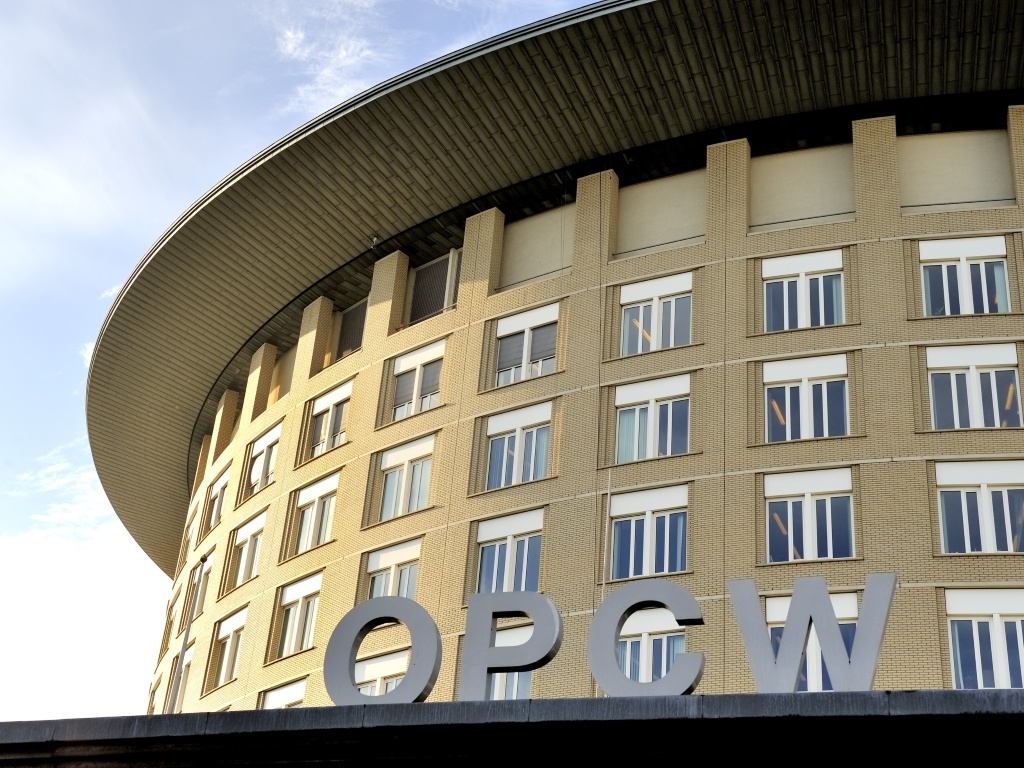
What are the physical properties of CWAs?
CWAs are stored as liquids but can be deployed as liquids, solids or gases.
They are highly toxic, often fast-acting, mostly imperceptible to senses, persistent and non-persistent.
Exposure to a CWA is normally one or more of three main routes - skin, eyes and/or respiratory tract, but can also be adsorbed via mucous membranes.
Liquids tend to be absorbed via the skin through direct exposure to a contaminated surface while vapours pose a greater risk for absorption via inhalation.
Vapours that are used outside can very easily be blown off course and away from their intended target. Similarly, the weather can be used to maximise their effect.
The effects of CWAs are also markedly enhanced when they’re used in a confined space.
The effects of exposure to a CWA can be immediate or delayed depending upon:
- The type of agent used (eg harassing, incapacitating, lethal)
- The means of exposure
- The duration of the exposure
- The concentration of the agent
- The rate of action (ie immediate or delayed)
- The degree of personal protection adopted
Why are CWAs popular weapons?
- The chemical substrates (active substances) used to create many CWAs are widely available and relatively inexpensive to produce.
- The methods or recipes for CWA production are easily accessible and shareable online.
- The chemical agents can work quickly, with the potential to cause mass casualties in very small quantities.
What is the risk of exposure to CWAs?
Exposure to CWAs can be accidental, in the process of casualty management, an industrial incident, military stockpiling or the discovery of leaking shells in old battlefields. Exposure has also occurred during ordinance disposal/demining when CWA markings have become unreadable or have been misinterpreted.
In recent times CWAs have also been used as a means of actual or attempted assassination, terrorist attack or act of war.
Categories of CWAs
CWAs can be broken down into several categories according to:
- Their tactical purpose
- Their chemical structure
- The way in which they affect the human body
Nerve agents are part of a group of highly toxic and environmentally persistent organo-phosphorous (OP) compounds that affect the transmission of nerve impulses in the nervous system.
They are stable, easily dispersed, highly toxic and can have rapid effects via either skin absorption or respiration.
Examples include: Sarin, Tabun, GF, VX, Soman, Cyclosarin, Novichok
Blister agents are primarily dispersed as liquids or vapours that can persist for days, if not longer and cause a delayed effect. Deaths account for only a small percentage of casualties.
Examples include: sulfur mustard (H,HD), nitrogen mustard (HN), lewisite (L) and phosgene oxime (CX)
Choking agents cause severe irritation or swelling of the respiratory tract.
In extreme cases the lungs become filled with fluid, causing a lack of oxygen which can lead to death. Choking agents were the first CW agents to be used extensively during WW1.
Examples include: chlorine (CL), phosgene (CG), diphosgene (DP)
Blood agents form part of a cyanide group of chemicals. They affect the body by preventing the utilization of oxygen within body tissue.
Blood agents typically enter the body via inhalation and cause the body to suffocate.
Examples include: hydrogen cyanide (AC), cyanogen chloride (CK), and arsine (SA).
Riot control agents (RCAs) - also referred to as harassment agents - are liquid or solid chemical compounds that cause a temporary lack of function by irritating the eyes, mouth, throat, lungs or skin.
Examples include: pepper spray (OC), CS gas (tear gas), adamsite, diphenylchlorarsine, dipenylcyanoarsine
Psychomimetic agents are incapacitating agents that cause changes in perception, thought or mood.
When administered in low doses they can cause loss of feeling, paralysis or hallucinations.
Examples include: BZ, Agent 15.
Exposure is typically via ingestion but can also be through transdermal absorption, inhalation or injection.
Examples include: fentanyl, etorphine
Chemical Warfare Agents Through History
Records of chemical warfare date as far back as 600BC when the Athenian military contaminated the water supply of the besieged city of Kirrha with highly toxic hellebore roots.
The mass production of CW agents became more prevalent in the 19th century following the development of industrial chemistry.
Within modern warfare, the first large-scale use of CWAs occurred during the First World War when the German military released 168 tons of chlorine gas in Ypres, Belgium, in April 1915, killing 5000 Allied troops.
Phosgene gas (a colourless irritant six times more deadly than chlorine gas) was also used by the Allies during the First World War. Phosgene is recorded to have been responsible for 85% of the conflict’s chemical weapons fatalities.
Mustard gas, a potent blistering agent, is reported to have caused the highest numbers of injuries during WW1, with the total number of casualties estimated at approx 120,000.
Key Events
|
1925 |
The Geneva Protocol is adopted by the League of Nations. It bans the use of chemical or biological agents in war but doesn’t prohibit their production, development or stockpiling |
|
1935-36 |
Mussolini drops mustard gas bombs on Ethiopia in the Italy-Ethiopia conflict |
|
1936 |
German chemist Gerhard Schrader completes synthesis and purification of the potent nerve poison Tabun |
|
1939-1945 |
Poisonous gases are used by the German and Japanese armies in World War 2 |
|
1953 |
British serviceman Ronald Maddison dies after being voluntarily exposed to the Sarin toxin at the UK’s Porton Down military facility |
| 1961-1971 |
The US military uses napalm and Agent Orange during the Vietnam War |
|
1972 |
The Biological Weapons Convention bans the development, production and possession of biological weapons, but provides no means to ensure compliance |
|
1988 |
Iraq uses chemical weapons including Tabun against Iran and Iraq’s Kurdish minority in the attack on Halabja |
|
1993 |
The Chemical Weapons Convention is signed, in which all States Parties agree to chemically disarm and destroy any stockpiles of chemical weapons |
|
1994 - 1995 |
Two Sarin attacks in Japan leave 19 dead and 5280 injured, the worst chemical event in modern Japanese history |
|
1997 |
The CWC disarmament agreement bans the development, production, stockpiling and use of chemical weapons |
|
2002 |
The use of a fentanyl derivative in Moscow against terrorists holding hostages results in 120 casualties due to asphyxiation |
|
2013 |
The Syrian military uses sarin gas against civilians during the Syrian civil war |
|
2018 |
A suspected sarin and chlorine gas attack in Douma is reported to have killed up to 150 civilians and injured hundreds more |
Traditional HazMat and CBRN Training Systems for Chemical Warfare
Historically, CBRN training systems utilising CWAs were confined to specialist training areas, generally on a military base.
Training typically involved the use of simulants which were dispersed manually using something like a plant sprayer or by pyrotechnic means.
Nowadays the primary reason for CWA training is for terrorist-related threats. This in itself presents different training challenges. For example:
- The potential location for the attack will more likely be within a civilian area
- Release may be indoors or outdoors
- The training should include familiarisation with the civilian environment that faces the potential threat
- Health and safety regulations relating to the training of civilians such as first responders might be more restrictive than those applicable to military personnel (although it is true to say that in many countries such differences no longer exist)
- Instructors may want to carry out training inside a building or facility rather than just outside in the open.
Live agent training (LAT) is a special opportunity for trainees to understand the characteristics of a live threat in a controlled manner. But what is important is that they get the very best out of that opportunity without wasting time struggling with learning how to use their detectors.

Historically detection of chemical warfare agents has tended to consist primarily of determining if a blister agent (H) or Nerve agent (G) was present.
Some detectors also had the capability of detecting a few additional agents. But, by and large, the relatively limited detection capability was dictated by the perceived threat at that time, which of course drove the market for detectors.
In many instances, users would only have one type of detector available, usually IMS (ion mobility spectrometry) or Flame Photometry.
The ability to specifically identify substance threats was generally restricted to “man portable“ or vehicle-mounted gas chromatograph / mass spectrometers (GC/MS).
The need to reduce uncertainty as to whether a false positive or actual threat exists at the initial point of detection of chemical warfare agents has resulted in many agencies employing more than one detector technology - quite often a mix of IMS and Flame Photometry - each incorporated within different instruments.
While this approach will dramatically reduce the probability of a false positive being interpreted as a threat, GC/MS are still used by many agencies to specifically confirm the identification of the substance present.
IMS technology and the associated processing software has advanced to permit agent identification, however, the ability to do so is achieved by limiting the detection capability to a relatively narrow range of substances.
Some manufacturers also offer detectors which are in fact comprised of hybrid technologies to both reduce false positives and enhance substance detection capability.
These advances in both detection requirement and detection technology require that the CBRN training system accurately reflects the capability of the detection instruments to ensure your students understand why respective detection technology has been employed.
This can be achieved by employing a simulation detection technology that is configured to represent the specific capabilities and characteristics of the detection technology incorporated within the real instrument.
To learn more about chemical warfare agent training, including live agent, simulation, and simulant agent training, download our free ebook.
A New CBRN Training System: Chemical Warfare Agent Training Using Simulators
New generations of intelligent, computer-based simulation tools offer a real and workable alternative to conventional CWA training methods.
These CBRN training systems employ electronic simulators that accurately replicate how real devices react when confronted by a range of chemical agents, taking into account the volatility of the agents, the prevailing meteorological conditions and the tactics and techniques used to detect differing agents.
The key difference is that there is no use of chemicals of any kind. Instead, electronic simulation agents are used.
The main driver for using simulators is the ability to be able to detect and monitor an invisible or near-invisible hazard as it moves through the air or contaminates equipment, infrastructure or terrain.
The greatest challenge is ensuring that the hazard environment is accurately portrayed so that no false lessons are learned.
To mitigate this problem, simulation manufacturers include a built-in after-action review (AAR) capability which allows interrogation of the simulator after use to determine if it was operated correctly.
Why Use Simulator Detectors for Chemical Warfare Training
Using an electronic CBRN training system simulates chemical vapours which enable instructors to create useful exercises that test their students’ abilities in the following core skills:
- Their ability to correctly prepare, dress and equip themselves for their mission
- That they can correctly prepare their detector for the detection of a suspected substance
- That they are able to assess a scene and decide the best means of initial approach (with due regard to their own safety, the safety of others and the preservation of evidence)
- Their ability to carry out a methodical and thorough search of the specified location
- That they can correctly read and interpret the readings of an instrument display and accurately report back any readings obtained
- That trainees stationed at the cell control point can correctly receive and record any reports
- That the correct decisions are made as a result of any reports made
- Their ability to decontaminate and safely undress post-incident.
Substantially more can also be obtained from an exercise than a simple “reading on a detector.”
The simulation source can be readily hidden from view and can be configured to represent a number of different substances to enable both CW agent and toxic industrial chemical (TIC) scenarios to be produced within the same exercise.
The emission level can be varied by the instructor such that, at maximum strength, a simulator will detect at typically 30 metres (95 feet) from the simulation source in free space.
The simulation source can be easily hidden, and multiple devices can be deployed to represent different substances within the same scenario.
Instructors save valuable time as it takes only a couple of minutes to set the source to the desired substance and emission level before placing it.
The instructor retains complete control over the entire exercise scenario. They can set up an exercise early in the day, test the expected readings on the simulators, and guarantee that when it comes to exercise time everything will be as they left it, leaving them to concentrate on student evaluation.
When the exercise is complete it takes a matter of minutes to collect the sources and remediate the training facility.
Using simulator detectors can significantly improve the quality and realism of chemical warfare agent training, but the first step is to know how to source these detectors.
Download our free ebook, How To Source Simulator Detectors for HazMat and CBRNe Training for detailed advice about sourcing and procuring the essential equipment you need for real experience chemical warfare agent training.
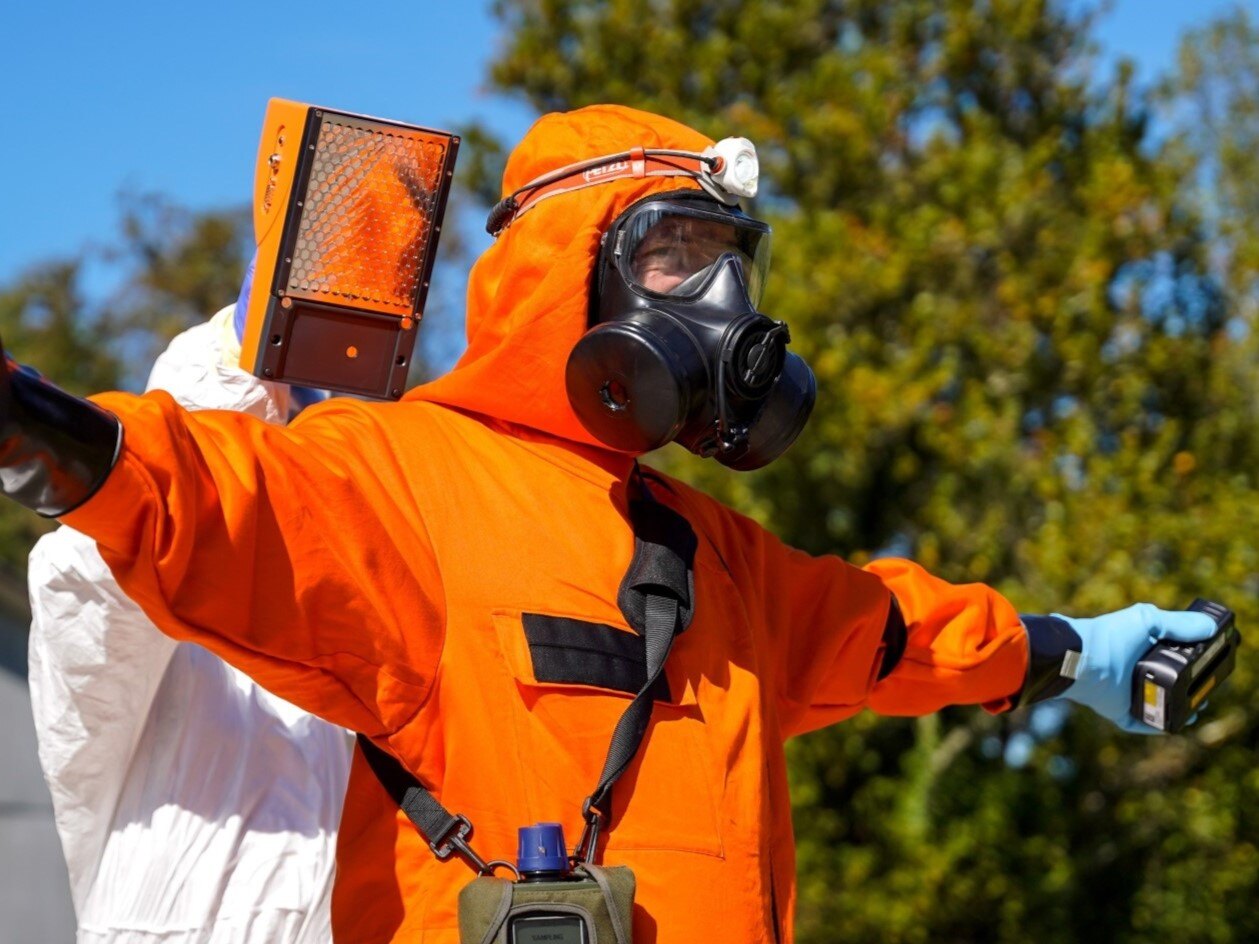
The Benefits of Simulator Detectors for Chemical Warfare Training
Simulator detectors offer a variety of advantages for realistic CWA training:
There is no requirement for the administration associated with radioactive sources
Many IMS detectors use an ionizing radiation source which is subject to regulatory controls (such as movement and storage certification and costs), regular wipe testing with associated time, costs and administration.
No expensive consumables
Most IMS detectors have sieve packs which are consumable items that can add significantly to the cost of training over time.
No need for gas
Whilst flame photometry detectors do not suffer from either (1) or (2) above, the requirement for hydrogen gas is a relatively expensive ongoing training cost.
No wear and tear of real detectors
Students break detectors used during training. This is inevitable; however the cost of repair is often not trivial. Then there is the time it takes to get the detector repaired.
They safeguard against student misuse
From time to time, students will mishandle their detectors.
When this happens, the detector then typically saturates and goes into “wait” mode, meaning that valuable teaching time is then taken up rectifying the problem.
A well designed electronic simulator will tolerate student misuse and, when it occurs, it will simply monitor the actions, generate a report and reset back to its original state.
No need for regular maintenance
Detectors can require ongoing preventative maintenance, and in some cases regular calibration, in order to work correctly.
A well designed simulator, on the other hand, requires no preventative maintenance, or regular calibration and uses no consumables other than disposable batteries.
In cases when a real detector has user-replaceable consumables - such as a hydrogen cylinder (Proengin AP2C, AP4C) or sieve packs (Smiths Detection LCD series detector including JCAD, and GID-M, Bruker RAID) - the simulator is able to replicate these consumables so the student can practice the replacement procedure.
They avoid damage from wrong consumable replacement
Incorrect replacement of consumables (or turning the detector on without a sieve pack fitted) can result in a very expensive repair or in some cases a ruined detector.
Clever use of technology means you can still simulate the effects of contamination without the need to use a substance. Your decontaminant can be as simple as soapy water.
The instructor can then determine if the instrument response to the simulation source should reduce partially (to demonstrate that decontamination drills were poorly executed) or reduce fully (to simulate a job well done).
There are cost advantages of simulators for CBRN training systems
While the upfront costs associated with simulators are generally higher than real detectors, this is not the case when whole-of-life costs are considered.
The true cost of using a real detector is a combination of many factors, such as regulatory compliance, land remediation, replacement of consumables, and maintenance. When those costs are spread over the typical lifetime of a detector, they can be dramatically higher than the initial capital cost of a simulator divided over the same period of time.
When training with simulators, the only ongoing cost (aside from batteries) is repair.
An important note however is that administration related to repair of simulator detectors is easier and less costly as there is no chemical source and no requirement for cleanliness certification.
The technology employed within a simulator is also purely electronic, rather than scientific instrumentation which removes the need for specialist repair facilities, such as clean rooms.
As you can see, the benefits of simulator detectors are significant for not only increasing the authenticity of training exercises but also for easing cost and regulatory pressures.
For more detailed advice about sourcing and procuring the essential equipment you need for real experience chemical warfare training, download our free ebook, How To Source Simulator Detectors for CBRN and HazMat Training.
CWA Simulator Detectors for CBRN Training
In this section we explore twelve types of electronic simulator detectors that can be used in a wide range of CWA exercises to create realistic training experiences.
The devices can be used anywhere, including within public buildings and most scenarios can be set up in as little as 10 minutes.
A dedicated simulation instrument for training in the correct use of the Bruker RAID M / RAID M100 in virtually any scenario and environment.
Key features:
- Instructors can define the simulated threat to represent specific CWAs (for example, GB, GD, GF, HD)
- Responds to safe, environmentally friendly electronic simulation HazMat sources
- Simulates actual identification of detected substances
- Simulates contamination of probe during contamination monitoring
- Monitoring and reporting of user errors such as missed confidence test, inlet nozzle contamination, failure to remove inlet or exhaust caps.
- Compatible with PlumeSIM
A high fidelity simulator for the Smiths Detection M4 JCAD.
Key features:
- Helps to preserve real JCAD detectors for operational readiness
- Reduces sieve pack consumption
- Compatible with PlumeSIM
A high fidelity simulator for the Smiths Detection LCD3.3 and LCD3.3FR.
Key features:
- Helps preserver real LCD3.3 for operational readiness
- Reduces sieve pack consumption
- Compatible with PlumeSIM
- Same menu structure and language support as the actual detector
A chemical hazard simulation training system that allows safe and comprehensive training in the correct use of the Smiths Detection GID-3, without external simulants or other consumables.
Key Features:
- No ionizing radiation source
- Low cost of ownership – no preventative maintenance or regular calibration
- Powerful instructor remote controls up to 8 simulators from over 800 meters away
- Capable of working with M42 remote alarm
- Supplied complete with simulation confidence tester, inlet and outlet cap, simulation rain caps, training
- Compatible with PlumeSIM
The CAMSIM CAM simulator for the Smiths Detection Chemical Agent Monitor (CAM) detector.
Key features:
- Responds to electronic sources that simulate chemical vapors, toxic industrial substances or false positives
- Compatible with PlumeSIM
- No Ionizing radiation source
A simulation training system for the Proengin AP4C.
Key features:
- Responds to all substance channels including explosive atmospheres
- A simple instructor remote enables total control over the exercise
- No consumables
- Compatible with PlumeSIM
A training simulator that looks and functions just like the Proengin S4PE surface sampler and confidence tester when used with AP2C and AP4C detectors.
Key features of the S4PE-SIM:
- Operates with AP2C-SIM and AP4C-SIM simulation sample pipe
- Programmable and re-useable sample collection scraper heads to simulate different categories of chemical agent
- Simulation confidence test scrapers
- Compatible with PlumeSIM
PlumeSIM enables training of multiple personnel over areas up to 15 square kilometers.
It allows instructors to select the parameters for the activation of simulation instruments - including the type of threat, release/delivery of single and multiple sources and a full range of environmental conditions.
Instructors can also record the actions of trainees from a single location.